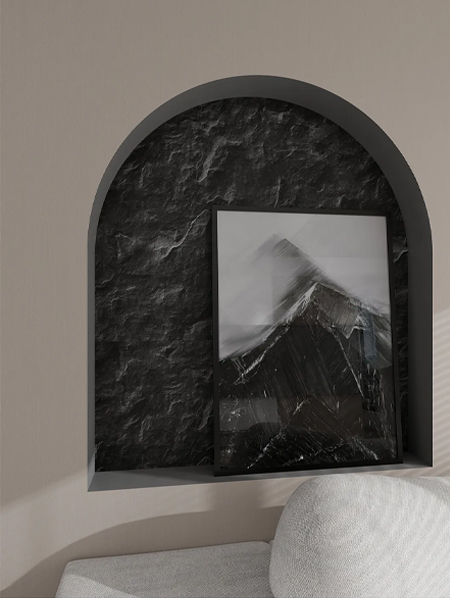
Our team is proud to offer on time guarantee and product guarantee to customer satisfaction.
Read More

The wear and scratch resistance of decorative papers directly affects their service life and aesthetics. These properties can be significantly improved by optimizing coating thickness and uniformity. The following is a detailed analysis of how to achieve this goal:
1. Effect of coating thickness on performance
(1) Optimal thickness range
Coating thickness is a key factor affecting the wear and scratch resistance of decorative papers:
Too thin coating: Failure to provide adequate protection, prone to surface damage due to external friction or sharp objects.
Too thick coating: May cause increased internal stress in the coating, cracking or peeling, and increase production costs.
Research shows that the coating thickness of decorative papers is usually in the range of 10-30 microns to balance wear resistance and flexibility.
(2) Layered design
Multi-layer coating design (such as base coat + top coat) can further improve performance:
Base coat: Enhances the adhesion of the coating to the substrate while providing basic protection.
Top coat: As the main wear and scratch resistant layer, it uses high hardness materials (such as polyurethane or acrylic resin) to improve surface performance.
2. Importance of coating uniformity
(1) Effect of uniformity on wear resistance
Coating uniformity directly determines the durability of the decorative paper surface:
If the coating thickness is uneven, some areas may be thinner and become weak points for wear or scratches.
Uniform coating can ensure that the entire surface has the same protection ability and extend the service life.
(2) Effect of uniformity on scratch resistance
Uneven coating may cause local hardness differences, which are prone to scratches or peeling when subjected to external forces.
Uniform coating distribution can reduce stress concentration and thus improve scratch resistance.
3. Methods for optimizing coating thickness and uniformity
(1) Selection of coating process
Roller coating process:
Roller coating is a common coating method suitable for uniform coating over a large area.
By adjusting the pressure, speed and gap of the roller, the coating thickness can be precisely controlled.
Spraying process:
Spraying is suitable for complex textures or three-dimensional surfaces, but spraying parameters (such as nozzle size, pressure and distance) need to be strictly controlled to ensure uniformity.
Dipping process: The dipping process can control the coating thickness by adjusting the dipping time and speed, but care should be taken to avoid bubbles or dripping.
(2) Online detection and feedback control
Introducing online detection technology (such as laser thickness gauge or ultrasonic detector) during the coating process can monitor the coating thickness and uniformity in real time.
Combined with an automated control system, the coating parameters are dynamically adjusted according to the detection results to ensure the consistency of coating quality.
(3) Surface treatment technology
Polishing and grinding: Polishing or grinding after the coating is cured can eliminate surface unevenness and improve the uniformity and smoothness of the coating.
Heat treatment: By heating the cured coating, the internal stress can be reduced and the adhesion and uniformity of the coating can be improved.
4. Selection and modification of coating materials
(1) High hardness materials
The use of high hardness coating materials (such as nano-alumina, silicon dioxide or silicon carbide particles) can significantly improve wear resistance and scratch resistance.
These materials can be evenly distributed in the coating through dispersion technology to form a solid protective layer.
(2) Elastic materials
Adding elastic materials (such as rubber particles or flexible polymers) can improve the impact resistance of the coating and reduce cracking or peeling caused by external forces.
(3) Self-healing coatings
Developing self-healing coatings (such as smart materials containing microcapsules) can automatically repair scratches when the surface is damaged, thereby extending the service life of decorative paper.
5. Precautions in practical applications
(1) Environmental adaptability
In high temperature or high humidity environments, the coating needs to have good heat resistance and water resistance. For example, polyurethane or epoxy resin coatings with strong weather resistance can be used.
For decorative paper used outdoors, it is recommended to add UV stabilizers to prevent coating aging.
(2) Processing condition matching
Select appropriate coating thickness and materials according to actual working conditions (such as furniture manufacturing or floor laying). For example, in high-frequency use scenarios, the coating thickness can be appropriately increased to improve durability.
(3) Maintenance and cleaning
Regular cleaning of the decorative paper surface (such as using a neutral detergent) can reduce the risk of wear and scratches and extend the service life of the coating.
By optimizing the coating thickness and uniformity, the wear resistance and scratch resistance of Decorative Papers can be significantly improved. This requires starting from multiple aspects such as coating process, material selection, online detection and surface treatment to ensure that the coating has both high hardness and good flexibility and adhesion. At the same time, in actual applications, targeted optimization is required according to specific working conditions and needs to ensure that decorative paper achieves the best balance between functionality, economy and environmental protection.
We focus on environmentally friendly, healthy, and fashionable home decoration, making your living space shine with unique charm.
Copyright © Hangzhou Xinyue Decorative Materials Co., Ltd. All rights reserved.
Custom Decorative Papers Manufacturers
 English
English русский
русский عربى
عربى